Positive feedback, yes, "as in the Schmitt trigger", no.
The Schmitt trigger feeds back DC, is designed with a lot of positive feedback, and is designed such that the output voltage hits the limits cleanly.
A regenerative receiver feeds back AC at the desired receive frequency. This means that if the circuit does go unstable in the small-signal sense the result will be a more-or-less sinusoidal oscillation, not a "bang into the stop and stick" behavior of a Schmitt trigger.
A regenerative receiver is designed to have enough positive feedback to overcome most, or just barely all, of the circuit losses.
In the case of using one for AM reception, you do not want enough positive feedback to overcome the circuit losses entirely -- you want just enough to increase gain, with selectivity narrowed to the station you want to listen to. You do not want the thing to oscillate, and you don't even want the thing to become so selective that you can't understand what's being said.
In the case of using one for CW reception, you do want enough positive feedback to overcome the circuit losses, and a tiny bit more. You want the thing to be mildly oscillating. This way, what you'll hear will be the beat frequency between the incoming carrier and the internal oscillator.
In a regenerative receiver that's good for CW reception, this oscillation will be "soft", meaning that as its magnitude goes up, the effective gain of the regeneration goes down in a controlled manner. This, in turn, means that the amplitude of the oscillation will be somewhat controlled.
Because the performance of the receiver depends on this regeneration being just right, and because tubes were expensive enough that there were serious amateur radio operators using them, serious amateur radio regenerative receivers featured a regeneration control knob that varied some circuit parameter or another to control the regeneration level. Typically the operator would be adjusting this knob to the conditions and to the signals they wanted to listen to.
Usually there wasn't much attention paid to what happened when the oscillation voltage started "hitting the stops" -- this was an undesirable condition that the operator was expected to avoid by actively twiddling the knobs.
Modern regenerative receivers, where they're used at all, are designed with the expectation of low performance, and the regeneration "control" is fixed to a value that insures that each unit's (crappy) performance is good enough for the task for which it was designed.
